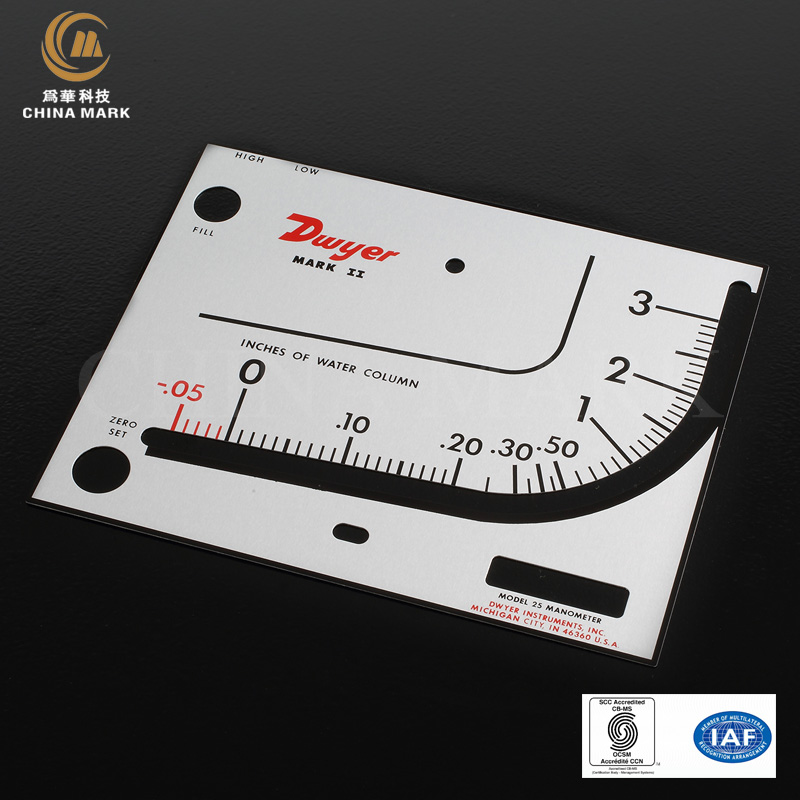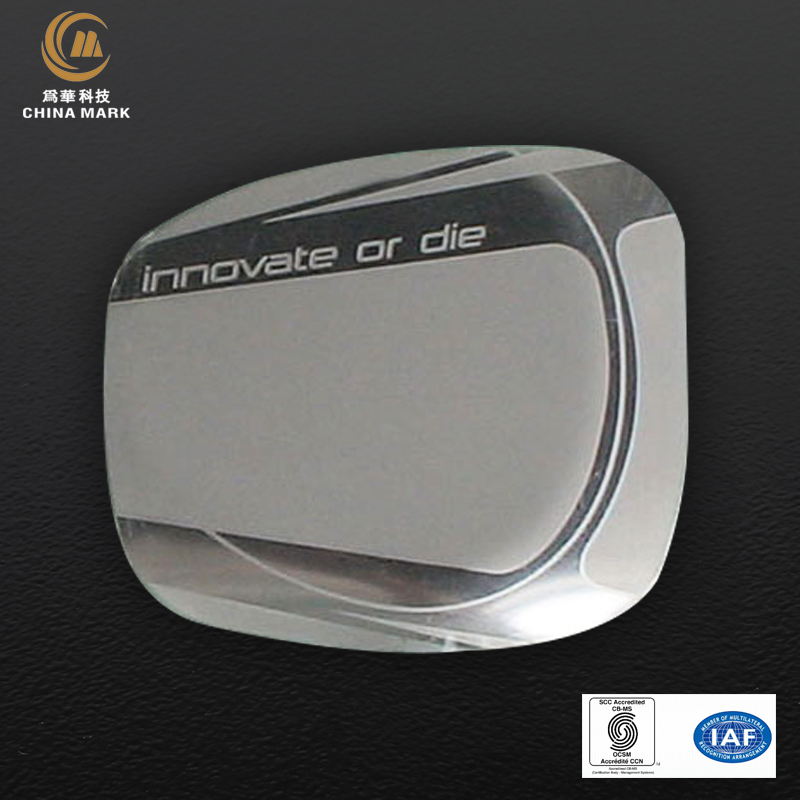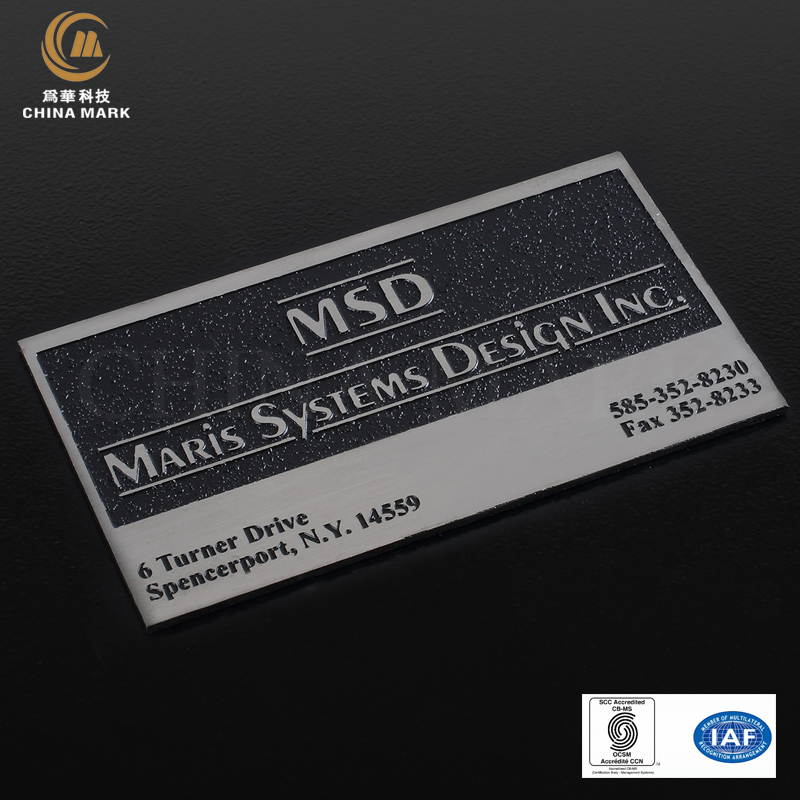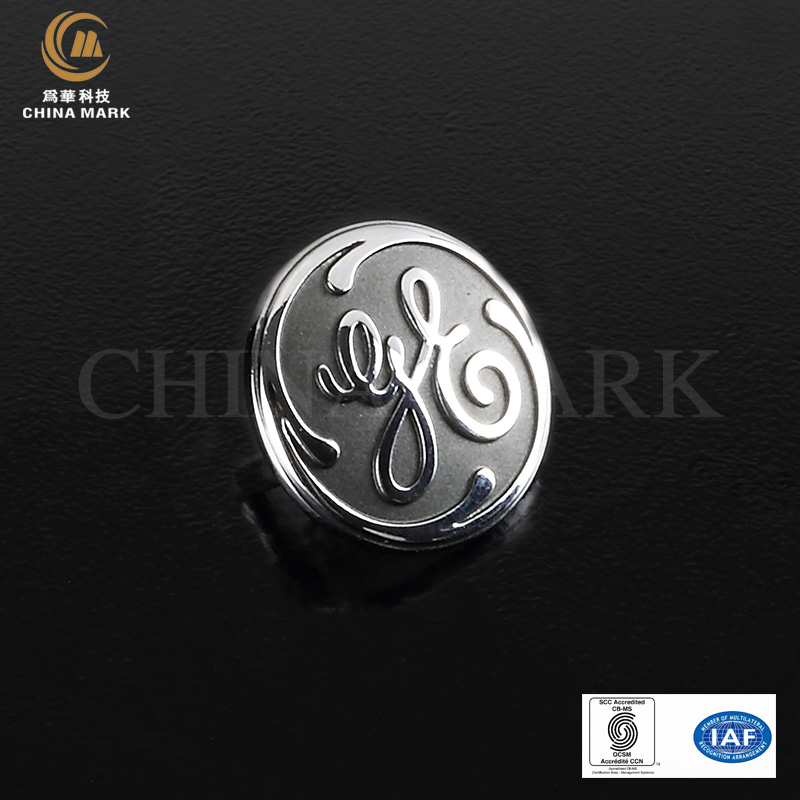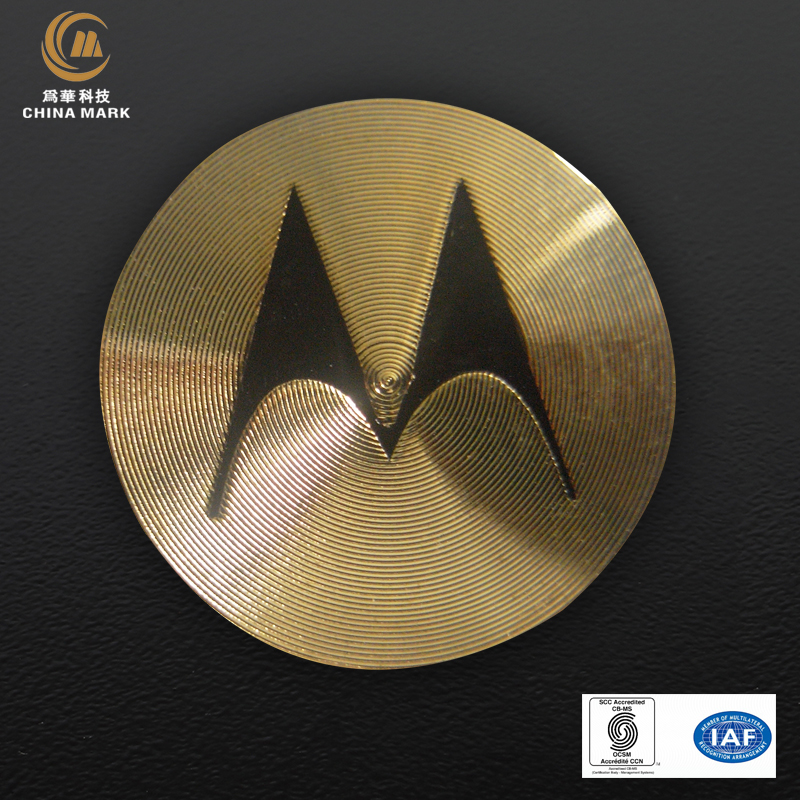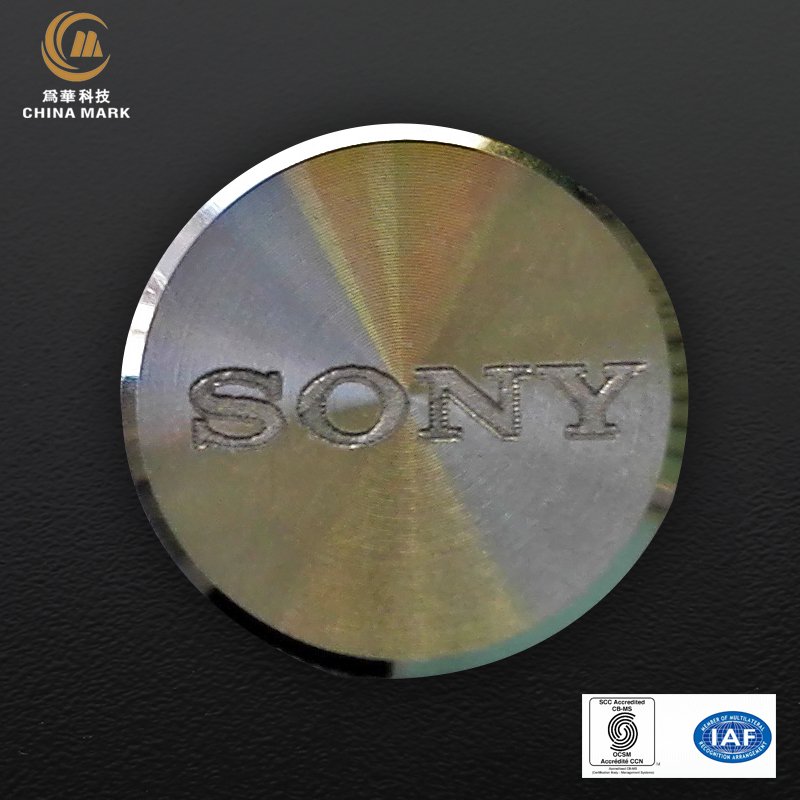Metal Logo Process
Metal Logos-Stamping Process
The video shows our weihua technology’s automatic continuous pneumatic stamping punch machine. What we saw in the video is a common process for us to make signs-stamping process, which is based on the plastic deformation of metal, using molds and stamping equipment exerts pressure on the sheet metal to cause plastic deformation or separation of the sheet metal, thereby obtaining a metal processing method of parts with a certain shape, size and performance.
This process is generally suitable for the production of larger batches of parts. The operation is more convenient, it is convenient to realize that the combination of mechanization and automation, and the high production efficiency (The punch machine can realize 50 punchings per minute as seen in the video), low cost. All of the stamping parts have high dimensional accuracy and high stability.
Generally,the stamping process can be divided into four basic processes: punching-bending-deep drawing-partial forming.
Common stamping materials are:
Aluminum alloy, stainless steel, low carbon steel, copper alloy, etc.
Metal Logo Signs-High-gloss cutting process
What you see in the video is our common high-gloss cutting process. It is a processing method that uses a precision engraving machine to reinforce the tool on the high-speed rotating precision engraving machine spindle to cut parts. At the edge of the product, embossing, and other places that need to be conspicuously processed, the milling process produces a local highlighting effect.
Usually, the processed effect has a bright edge (C angle), bright surface, CD texture.
At the same time, this process is generally used on mobile phone cases, power bank shells, audio signs, washing machine decorative signs, earphone signs, microwave button decorative signs, etc.
Metal Sign Logo-Automatic Spraying Process
The video shows an automatic spraying process, which is also a common process for many metal signs. This process generally uses a spray gun or a disc atomizer. With the help of pressure or centrifugal force, it is dispersed into uniform and fine droplets and applied to the surface of the object to be coated.
The video shows fully automatic spraying. This spraying process is completely operated by a digital computer, which can memorize and store spraying debugging data parameters. It has uniform strength, fast speed, high spraying efficiency, and high output advantages, which greatly reduces some time and labor.
This automatic spraying process is mainly used in the hardware industry, plastic industry, furniture industry, and other fields. It is suitable for all kinds of aluminum pattern signs, font signs, embossed and recessed font signs, etc.
Metal Logo Sign-Embossed-recessed stamping
Embossed-recessed stamping is a metal processing technology. It uses an embossed-recessed die to deform the plate under a certain pressure, thereby processing the surface of the product. Various embossed and recessed letters, numbers and patterns are stamped to enhance the three-dimensional sense of the product.
Bump stamping is generally divided into the following types of punches for stamping:
Manual punching machine: manual, low work efficiency, low pressure, suitable for manual processing such as small holes.
Mechanical punch: mechanical transmission, high speed, high efficiency, large tonnage, the most common.
Hydraulic punch: hydraulic transmission, slower than mechanical speed, larger tonnage, and cheaper than mechanical ones, it is very common.
Pneumatic press: pneumatic transmission, equivalent to hydraulic pressure, but not as stable as hydraulic pressure, usually rare.
What kind of signs is generally suitable for the stamping bump process?
This process is generally suitable for stamping recessed letter/embossed letter aluminum signs, stamping recessed numbers/embossed number aluminum signs, stamping recessed pattern/embossed pattern aluminum signs, and stamping stainless steel recessed and embossed letters/recessed numbers/recessed patterns and other signs
Custom Metal Logo Signs-Machined Surface Brushing process
Shown in the video is a machined surface brushing process.
Generally, this kind of processing technology is a technical processing method in which the metal is forced through the mold under the action of an external force, the cross-sectional area of the metal is compressed, then obtained the required cross-sectional area shape and size.
As you can see in the video, this is a method of using brushed cloth strips to reciprocate and rub back and forth on the surface of the product to improve the surface finish of the product. It is clearly visible that the texture of the aluminum plate surface in the video is linear, which can improve its surface quality and conceal minor scratches on the surface.
The metal surface brushing process can well conceal the mechanical patterns and mold clamping defects in the production and can make the product look more beautiful.
There are four common brushed textures:
1. Straight wire brushing
2. Random pattern brushing
3. Thread brushing
4. Corrugated wire brushing
What kind of sign is mainly suitable for the brushing process?
Most of them are used on stainless steel brushing signs and aluminum brushing signs, and a small part are used on copper brushing signs.
Making Metal Signs-Screen Printing Process.
The video shows that another common process for making signs, the screen printing process.
Screen printing refers to the use of silkscreen as a plate base, and through a photosensitive plate making method, made into a screen printing plate with pictures and texts. Screen printing consists of five major elements, screen printing plate, squeegee, ink, printing table and substrate.
Advantages of screen printing:
(1) It has strong adaptability and is not limited by the size and shape of the substrate. The three printing methods of flat printing, embossing, and gravure printing generally can only be printed on flat substrates. The screen printing can not only print on flat surfaces, but also print on curved, spherical, and concave-convex substrates.
(2) The ink layer has strong covering power, which can be used for pure white printing on all black paper with a strong three-dimensional effect.
(3) Suitable for various types of inks, including oily, water-based, synthetic resin emulsion type, powder, and other types of inks.
(4) The plate making is convenient and simple, and the price is cheap.
(5) Strong ink adhesion
(6) It can be silk-screened by hand or machine-printed
What kind of signs is the silkscreen process mainly used?
The screen printing process is generally suitable for aluminum screen printing letter signs, aluminum screen printing pattern signs, and aluminum screen printing digital signs, etc.
Aluminum signs:
Among the products of metal signs, aluminum signs are cost-effective and affordable. The main processes are stamping and spraying, bump spraying, polishing and wire drawing, and the quality of backing is guaranteed for 3-5 years.
The application range is very wide. It is often used for doors, windows, kitchens, furniture, wooden doors, electrical appliances, lights, and boutique decorations.
Below is the features of aluminium name plate:
(1) Good processability:
Custom-made anodized aluminum signs are highly decorative, malleable, and can be easily bent.
(2) Good weather resistance:
If the customized anodized aluminum sign is used indoors, it will not change color for a long time, will not corrode, oxidize, and rust.
(3) Strong metallic sense:
The anodized aluminum sign has high surface hardness, good scratch resistance, and presents an oil-free effect, which can highlight the metallic luster and improve product quality and added value.
(4) Strong stain resistance:
Anodized signs are not easy to get dirty, easy to clean, and will not produce corrosion spots.
| Surface treatment of aluminum signage | Uses of aluminum tag |
| Approval of flowers | Electronic signage (mobile phone, etc.) |
| CD pattern | Electrical signs (microwave ovens, etc.) |
| Sandblasting | Mechanical equipment signs (barometric thermometer, etc.) |
| Polishing | Signs of household appliances (air conditioning, etc.) |
| Drawing | Automotive equipment signs (navigators, etc.) |
| High light cutting | Office supplies signs (door, etc.) |
| Anodic oxidation | Bathroom signs (faucets, showers, etc.) |
| Two-color anodizing | Sound signs (JBL sound, etc.) |
| Luggage signs (Kadi Crocodile, etc.) | |
| Wine bottle label (Wuliangye, etc.) |
How to install aluminum name tag:
1.Make feet behind the label:
During this type of installation, there must be two holes for mounting feet on the panel of your product.
2.Adhesive method:
The double-sided adhesive is attached directly after the label is produced by us (there are ordinary adhesives, 3m adhesives, Nitto adhesives and other options)
3.Hole punching method:
Holes can be punched on the label, which can be directly installed with nails and rivets.
4.Screw up:
Tap the foot directly behind the label, and then put the screw up. This is mainly used for audio products

Stainless steel nameplates
A small piece of stainless steel name plate, seemingly simple, but it actually contains material selection, thickness selection, process selection, material processing, process processing, font and LOGO processing and other aspects.
The production process is often stamping, etching or printing. It is cost-effective and caters to the trend. It has abrasive yarn corrosion and its high-gloss process. In addition, it uses a strong adhesive to paste, which is very convenient to use.
The stainless nameplate has a metallic texture, a high-end feel, and is lighter, showing a stylish and modern quality. Stainless steel texture is durable, very suitable for outdoor products.
It is corrosive and resistant to dents. Its strength makes it very suitable for industrial data or nameplates and information labels.
Features of stainless steel signs
1. Stainless steel signs have good anti-rust effect and long service life
2. Stainless steel signs have good appearance and look relatively high-end
3. Stainless steel signs are distinguished between brushed and shiny
4. The stainless steel sign has a metallic texture and is very high-end atmosphere
5. Strong corrosion resistance, can resist the corrosion of acid, alkali, salt and other compounds
6. Heat resistance, wear resistance and cleaning resistance
7. Strong metal texture, giving a noble effect
Common materials for stainless steel logo plates:
There’re various tainless steel label material , commonly used stainless steel material is: 201, 202, 301, 304, 304L, 316, 316L, 310S, 410, 430, 439, and so on, the most commonly used is 304 stainless steel material.
Variety of surface effect styles:
The surface effects of stainless steel signs include mirror, matte, sand, brushed, net, twill, CD, three-dimensional bumps and other surface style effects; there are many exquisite styles and a variety of choices!
Stainless steel material characteristics:
Stainless steel has the properties of high temperature resistance, acid and alkali resistance, corrosion resistance, oxidation resistance, and resistance to deformation.
Several basic techniques of stainless steel signs:
Electroplating process:
The process of using electrolysis to attach a layer of metal film to the surface of the parts, thereby preventing metal oxidation, improving wear resistance, conductivity, light reflection, corrosion resistance and enhancing aesthetics.
Stainless steel etching:
It can be divided into shallow etching and deep etching. The shallow etching is generally below 5C.
The screen printing process is used to form the etching pattern! Deep etching refers to the etching with a depth of 5C or more.
This kind of etching pattern has obvious unevenness and has a strong feel to the touch. Generally, the photosensitive etching method is used;
Because the deeper the corrosion, the greater the risk, so The deeper the corrosion, the more expensive the price!
Laser engraving (laser also known as laser engraving, laser marking)
laser engraving is a surface treatment process, similar to screen printing and pad printing, it is a surface treatment process that burns patterns or text on the surface of the product.
Electroplating
Electroplating is the process of using electrolysis to deposit metal or alloy on the surface of the workpiece to form a uniform, dense, and good bonding metal layer, which is called electroplating. The simple understanding is the change or combination of physics and chemistry.
Application scope of stainless steel signs:
Kitchenware, furniture, home appliances, knives, machinery and equipment, clothing, hotels, gates, automobile industry and other enterprises.
